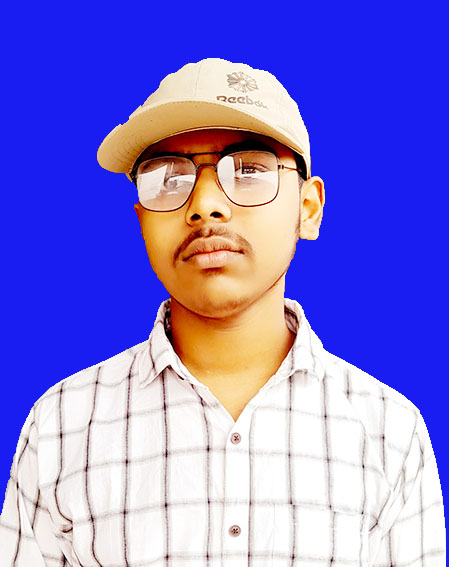
Scientists have made a major breakthrough in imaging the dynamic assembly of bilayer covalent organic frameworks in solution.
This discovery opens the door to better control over how these ultra-thin materials stack, leading to fascinating moiré superlattices — a key player in the growing field of “twistronics.”
Imaging the Dynamic Assembly of Bilayer COFs
Chemists from the National University of Singapore (NUS) have successfully captured real-time images of bilayer covalent organic frameworks (COFs) forming in solution. This breakthrough sheds new light on how these layers stack and how moiré superlattices emerge. Moiré superlattices are part of the growing field of “twistronics,” where rotating one atomic layer relative to another can create new electronic properties. In this state, electrons no longer behave as independent particles but instead strongly interact with each other, potentially leading to unique forms of superconductivity or magnetism.
While moiré superlattices have been observed in inorganic materials, they are far rarer in purely organic crystals. This is because moiré patterns require materials that are both ultrathin and highly crystalline — properties that are difficult to achieve in organic materials using conventional imaging techniques.
Understanding the Stacking Process in 2D COFs
Two-dimensional covalent organic frameworks (2D COFs) are highly porous organic materials with promising applications in catalysis, energy storage, and gas storage. These structures consist of covalently bonded layers held together by electrostatic interactions and van der Waals forces. However, the transition from a single-layer to a bilayer remains poorly understood due to the complex interplay of these bonding forces, including van der Waals forces, electrostatic attraction, and hydrogen bonding.
The precise stacking of the second layer is critical, as misalignment can reduce the material’s crystallinity. Currently, producing single COF crystals larger than a millimeter is challenging due to potential errors in bonding in both the horizontal (x-y) and vertical (z) dimensions. Misalignment during stacking often leads to crystallinity issues, particularly from rotational misalignments between layers. Observing the stacking process during growth is essential for understanding the mechanism, but this poses significant experimental challenges, as the process occurs in solution.

Overcoming Crystallinity Issues in Synthesis
Random stacking and bond formation during hydrothermal synthesis contribute to poor crystallinity, often resulting in crystal domains smaller than tens of microns. A deeper understanding of layer stacking could enhance synthesis methods, enabling the fabrication of larger COF crystals.
While there has been substantial progress in synthesizing monolayer 2D polymers (2DP), the development of bilayer 2DP stacks remains limited. This area is particularly promising, as stacking or twisting 2D materials can create new materials with properties distinct from those of the individual layers. In inorganic materials, this field, known as twistronics, has led to discoveries but remains to be explored in 2D organic materials.
Breakthrough in Bilayer COF Synthesis and Imaging
A team led by Professor Loh Kian Ping from the NUS Department of Chemistry has developed a method for synthesizing large area two-layer 2D COFs at the liquid-substrate interface. This was achieved through the direct condensation of chemical molecules. Using scanning tunneling microscopy (STM) in solution, they successfully imaged the molecular assembly process, capturing the formation of both the monolayer and bilayer. More importantly, they show how molecular structure and solvent mixture influence the bilayer stacking modes, and how, under certain conditions, large-area moiré superlattices emerge from twisted bilayer stacking.
Due to their highly porous and organic nature, COFs present significant challenges for imaging in air or ultra-high vacuum (UHV) conditions using STM. The pores of COFs are typically filled with solvent, and their surfaces may trap residues, complicating atomic-scale imaging. To overcome these difficulties, the team focused on imaging COFs directly in solution, where the surface is cleaner than when exposed to air.
Prof Loh said, “Performing STM in solution allows us to study the dynamic self-assembly process of molecular frameworks in real-time.”
The research team includes Dr Zhan Gaolei who was an NUS postdoctoral fellow at the time of research and is currently a researcher at Suzhou Institute of Nano-tech and Nano-bionics, China), Professor Steven De Feyter from KU Leuven, Belgium and Professor Zhu Yihan from Zhejiang University of Technology, China.
The research findings have been published in the journal Nature Chemistry on 20 February 2025.
Moiré Superlattices and Controlled Twist Angles
A moiré superlattice is a pattern that emerges when two layers of periodic structures, like 2D materials, are stacked on top of each other but slightly misaligned or at different angles. This misalignment creates a new, larger periodic pattern that is not present in either of the original layers. In simpler terms, it is like two sets of paper strips. If one set of paper strip is placed over another but rotated slightly, the overlapping area will create a new pattern—similar to the moiré pattern. Moiré superlattices can lead to interesting electronic properties and behaviors that are not found in the individual layers, making them a significant area of research in materials science and condensed matter physics.
Fine-Tuning Twist Angles Through Molecular Design
The research team demonstrated that by designing specific precursor molecules, they could precisely control the twist angle of the stacked COF layers to form a moiré superlattice. Unlike inorganic 2D materials, where the twist angles are often random and difficult to control, in 2D COFs, the twist angles can be controlled by designing the molecular precursors.
The researchers compared two different monomer isomers: pyrene-2,7-diboronic acid (27-PDBA) and pyrene-1,6-diboronic acid (16-PDBA). With 27-PDBA, the second layer could either be AA-stacked or twisted in relation to the first layer. In contrast, only a moiré superstructure formed with 16-PDBA, exhibiting a uniform moiré superstructure. This difference is attributed to the subtle differences in the electrostatic potentials. 27-PDBA exhibits concentrated negative charge lobes on its boroxine rings, which may hinder the formation of twisted phases compared with 16-PDBA which has a flatter electrostatic potential.
Future Directions and Potential Applications
This study provides fundamental insights into the controlled synthesis of ultra-thin porous organic films, as thin as two-unit cell layers. Such films with well-controlled channel structures can be used as ultra-thin filtration layers in nanofiltration applications. Furthermore, the ability to tune the twist angle in stacked COFs opens new possibilities for manipulating light propagation, including phase and polarisation control.
Looking ahead, the researchers plan to extend the concept to a broader class of molecular precursors with different linkage chemistries. They aim to achieve deterministic control over twist angles in bilayer COF stacking, unlocking further potential applications in filtration and optical materials.
Reference: “Moiré two-dimensional covalent organic framework superlattices” by Gaolei Zhan, Brecht Koek, Yijia Yuan, Yikuan Liu, Vipin Mishra, Veniero Lenzi, Karol Strutyński, Chunxiao Li, Rongrong Zhang, Xin Zhou, Hwa Seob Choi, Zhen-Feng Cai, Joaquín Almarza, Kunal S. Mali, Aurelio Mateo-Alonso, Manuel Melle Franco, Yihan Zhu, Steven De Feyter and Kian Ping Loh, 20 February 2025, Nature Chemistry.
DOI: 10.1038/s41557-025-01748-5






Leave a Comment